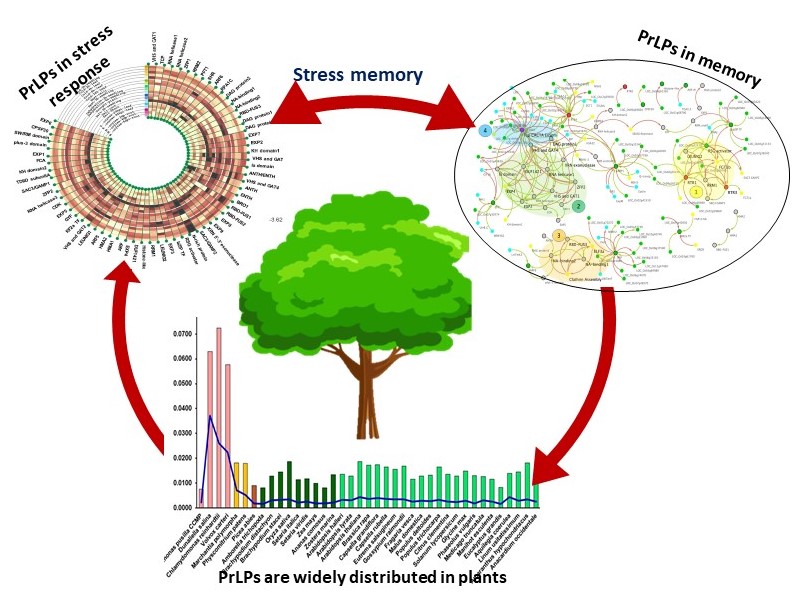About author: Dr. Sampurna Gara is a Ph.D. in Life Sciences (2016), Jawaharlal Nehru University, New Delhi. She pursued her Ph.D. under Prof Baishnab Tripathy. For her Ph.D. dissertation, she studied the changes in nitrogen and sulfur metabolism in plants through the modulation of enzymes involved in the siroheme biosynthesis pathway. Thereafter, she worked as a post-doc with Prof Sopory studying the light and abiotic stress signalling crosstalk. She has been awarded CSIR-SRA (Pool Scientist) fellowship and is currently working on the characterisation of prion-like proteins in rice with Dr. Sneh Pareek at Plant Stress Biology group, ICGEB, New Delhi.
Dr. Charanpreet Kaur did her Ph.D. in Plant Biotechnology (2013) from ICGEB, New Delhi, under the able mentorship of Prof. SK Sopory and Dr. Sneh L Singla-Pareek. During her doctoral studies, she worked on understanding the role of the glyoxalase family of rice in abiotic stress physiology. Thereafter, she worked as a DST-INSPIRE faculty at JNU. Presently, she is working as a research scientist at ICGEB. Her research interests include harnessing the potential of beneficial microbes for improving crop productivity under stress and investigating the mechanisms of plant stress memory through prion-like proteins. Lately, she has received the prestigious Innovative Young Biotechnologist Award from the Department of Biotechnology, Government of India.
How would you explain your research outcomes to the non-scientific community?
Like humans, plants too have memory through which they can remember their past encounter with any hostile condition or environment. These memories prepare them for any forthcoming danger posed by similar conditions. These hostile conditions are a stress for the plant and a threat to their survival. Our work suggests that the stress memory mechanisms in plants may involve prion-like proteins (PrLPs). Prions are infectious self-replicating protein conformers. They can cause devastating neurological diseases in humans and mammals. However, beneficial effects have lately been associated with them. Our study investigated the occurrence of such prion-like proteins in plants by examining the plant proteomes for the presence of prion-like domains, characteristic of prion proteins. Here, we name them prion-like proteins until they are experimentally validated to possess prion behavior or related properties. Our work is the first report anticipating the role of PrLPs in memory of stress in plants.

How do these findings contribute to your research area?
Our study shows the widespread presence of prion-like proteins across the plant kingdom with indications of involvement of some candidates in stress and memory mechanisms. The existence of stress memory in plants has been suggested for long, but the exact molecules contributing to this mechanism are eluding. Therefore, our research gives a new dimension to solve this scientific riddle.
What was the exciting moment during your research?
Initially, we explored the rice proteome with the aim to identify PrLPs and gain an understanding of the kind of functions these PrLPs perform in the cell. However, discussions with Prof Sopory gave a new direction to our study when he suggested that we should look at their role in plant stress and memory. All the authors took his suggestion well, and indeed found a very strong solid link between PrLPs and stress memory, which served as the turning point of our study and changed the overall design of the manuscript.
What do you hope to do next?
The exact role of these group of proteins would be fascinating to pursue further in research. Our new projects are, therefore, concentrated on rice PrLPs. We are working towards the characterization of these proteins in order to validate our hypothesis that prion-like proteins might be the missing link in plant stress memory.
Where do you seek scientific inspiration from?
Prof Sopory has been our role model as a scientist par excellence and the most humble human being, we have come across. He is the best person to talk to if one wants to gain novel ideas for their research. This work is, in fact, the result of discussions with him that motivated us to explore this field of prion-like proteins. Dr. Gitanjali Yadav proficiently backed up his ideas.
How do you intend to help Indian science improve?
Going by our own experience, our collaboration with Dr. Gitanjali Yadav, staff scientist V and a lecturer at the University of Cambridge, tremendously helped us exchange intellectual ideas and gain new insights into this research work. Hence, a multidisciplinary approach to address scientific queries is the need of the hour. In our opinion, international collaborations with contemporaries working in similar areas of interest would help Indian science evolve.
Reference
Garai, S., Citu, Singla-Pareek, S. L., Sopory, S. K., Kaur, C., & Yadav, G. (2021). Complex Networks of Prion-Like Proteins Reveal Cross Talk Between Stress and Memory Pathways in Plants. Frontiers in plant science, 12, 707286.
Edited by: Manveen K Sethi
